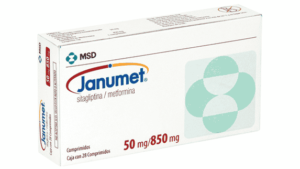What is Glyxambi?
(See detailed medicine prescription information here.)
Type of medication: oral medication
Assist in: regulating blood sugar.
Type: Prescription medication
Used to treat: Type 2 diabetes.
Medicine family: the Gliptin family of diabetes drugs.
Dosage: Once daily, taken in the morning, with or without food.
Glyxambi, the diabetic drug, contains linagliptin and empagliflozin as active components. Another type of drug is empagliflozin, which is a sodium-glucose co-transporter inhibitor. Linagliptin is a dipeptidyl peptidase-4 enzyme inhibitor. Each tablet contains 10 mg or 25 mg of empagliflozin and 5 mg of linagliptin. The medication is a creation of the German-based international pharmaceutical giant, Boehringer Ingelheim.
What is Type 2 diabetes?
Type 2 diabetes is characterized by conditions where the body produces insufficient insulin or responds abnormally to the insulin it produces. The pancreas produces and releases insulin in the blood stream, allowing blood sugar to enter the cells of your body for use as energy. When a person has type 2 diabetes, body cells become resistant to insulin. As a result, your body makes more insulin to try to get cells to respond. This will lead to imbalance and your blood sugar will rise, leading to type 2 diabetes. High blood sugar can cause serious health problems, causing amputation or affecting your heart, vision, and kidneys.
What is Glyxambi used for?
Our body has a group of gastrointestinal hormones called incretins. When the body needs insulin, such as after eating, incretins aid in its production, and they also decrease the liver’s glucagon production when it’s not necessary, such as during digestion. Dipeptidyl peptidase-4 (DPP-4) can damage incretins, and the body may not regulate blood glucose levels. Linagliptin is a class of gliptins, an oral diabetes medication that protects incretins from damage and is known as a DDP-4 inhibitor. Gliptins help regulate blood glucose levels. People with type 2 diabetes who have not responded well to drugs such as metformin and sulphonylureas typically receive prescriptions for lipagliptins.
DPP-4 inhibitors may help with weight loss besides decreasing blood sugar levels. Researchers have also linked them to higher rates of pancreatitis.
Other medicines in the class of gliptins are:
- Januvia (Sitagliptin)
- Galvus (Vildagliptin)
- Onglyza (Saxagliptin)
- Tradjenta (Linagliptin)
- Glyxambi
DPP-4 inhibitors (dipeptidyl peptidase-4 inhibitors), which include Glyxambi, are a broad class of anti-diabetic medications that help you control your insulin levels, particularly after a meal when blood sugar levels are high. Additionally, it aids in reducing the quantity of sugar your body produces on its own.
We recommend Glyxambi, which contains both linagliptin and empagliflozin, as an adjuvant therapy for diabetic patients to help them better control their blood glucose levels. For the best results, combine this drug with lifestyle modifications such as exercise and dietary adjustments. Adult patients with type II diabetes mellitus and cardiovascular disease typically use empagliflozin to reduce their risk of cardiovascular death. Patients with type I diabetes or diabetic ketoacidosis should not take this medication.
How to take this medication
Take the medication in the morning each day, with or without food. For best treatment results, patients should adhere to advice from a health care professional about food and exercise. Patients who forget to take a dose of Glyxambi should do so as soon as they remember. When the next dose is almost due, they should omit the missed dose and take the subsequent dose as prescribed. Under no circumstances should patients take the medication twice as often. You can use Glyxambi with other diabetic drugs, but doing so increases the risk of hypoglycemia (low blood glucose).
How does this drug work?
The active ingredients of Glyxambi (empagliflozin and linagliptin) work synergistically to enhance glycemic control in diabetes patients. In the past, we talked about how linagliptin blocks dipeptidyl peptidase-4 (DPP-4) enzymes and how empagliflozin blocks the sodium-glucose co-transporter (SGLT2). The primary transporter responsible for reabsorbing glucose from the glomerular filtrate is sodium-glucose co-transporter 2. Empagliflozin lowers the renal threshold for glucose by inhibiting SGLT2, which lowers the renal threshold for glucose and raises the excretion of glucose through the urine. On the other hand, linagliptin inhibits dipeptidyl peptidase-4. DPP-4 is an enzyme that breaks down the incretin hormones GLP-1 and GIP, which stands for glucose-dependent insulinotropic polypeptide. Linagliptin helps increase the concentration of active incretin hormones while promoting insulin release in a glucose-dependent manner. At the same time, it decreases the level of glucagon in the blood.
Dosage
- A doctor should evaluate renal function before starting medication.
- Glyxambi, the diabetic drug, contains linagliptin and empagliflozin as active components. There are two different strengths of tablets available.
- 10 mg empagliflozin/5 mg linagliptin
- 25 mg empagliflozin/5 mg linagliptin
- The recommended dose of GLYXAMBI is 10 mg empagliflozin and 5 mg linagliptin once daily, taken in the morning, with or without food.
- You can increase the dose to 25 mg of empagliflozin and 5 mg of linagliptin once daily.
Glyxambi side effects
- Runny nose
- Stuffy nose
- Upper respiratory tract infections
- Sore throat
Please note that this section may not list all the side effects of Glyxambi. Patients may experience adverse effects not included on this list. Patients should consult a doctor right away if their symptoms worsen or continue to persist. Patients should seek medical assistance as soon as any major adverse effects appear.






